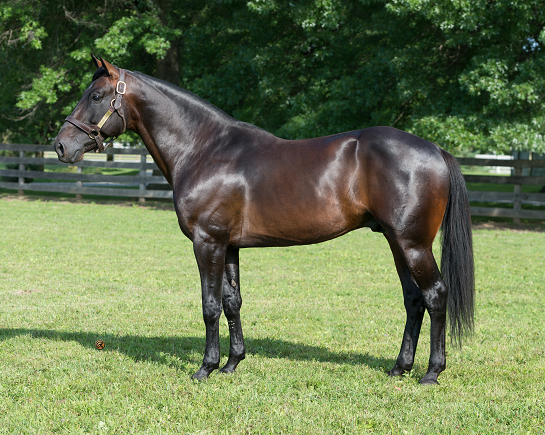One man’s opinion…. Rob Courtenay
The drop in mares bred over the last few seasons is not a new topic that’s just crawled out from under a rock but, big picture, what is the impact of less mares being bred on those many stallions vying for the breeders favour here in NZ.
Historically, NZ breeders (certainly commercial breeders) struggle to support the home bred colonial stallions once they finish their harness racing careers and tend to focus their research and support on those from America that become available, often only racing for 2 seasons (@ 2 & 3) with a sub 1:49 time and over a $1M in the bank.
As an example the one and only Bettor’s Delight only had 26 starts, race timed in 1:49.8 and won a handsome $2.6M in stakes.
Of course Cardigan Bay, Young Quinn and more recently Shartin and Lazarus all gave ample proof at various times that Kiwi bred horses were every bit as good as their American counterparts.
In America, the major ‘farms’ invest in the top race colts and therefore their early stud seasons are boosted with a fine selection of their best mares and subsequently are in demand at yearling sale time 12 months later.
Lets remember there is the ceiling in place of 140 mares (not counting the free returns) for any stallion in service in the USA.
Perfect Sting, Pebble Beach, Always B Miki, Captain Crunch, Sweet Lou, Downbytheseaside, Huntsville, Papi Rob Hanover, Captaintreacherous, Capt Midnight and Tall Dark Stranger are all recent examples of top American horses who have made significant starts to their stud careers and at some point have or will feature near the top of the 2yo sires charts.

In 2022, there were 50 resident pacing stallions in America that served 50+ mares with many of the above reaching the 140 quota.
Australia, the 3rd of the 3 world pacing powers (Europe is of course ‘trotting’ orientated) also has a ceiling on the number of mares a stallion can serve at 150.
In 2023-24, Australian breeders had a choice of 60 pacing stallions compared to NZ’s 36 and it was worth noting that a number of their ‘homebred’ sires served books in excess of 100 mares.
For A Reason, Poster Boy, Ride High and Soho Tribeca highlighted this group of former ‘high profile’ racehorses.
All four of this group bettered 1:50 on raceday but in the NZ breeding season just gone, they generated just 22 mares served between them with Ride High topping the list at 11 mares.
In the NZ season just passed, only 3 stallions served more than 100 mares with the renaissance of Sweet Lou (262) lonely in first place. Downbytheseaside (116) and Captain Crunch (107) made up the trifecta. Bettors Delight (98) and Always B Miki (99) made up the top five.
The previous season, five stallions exceeded the ‘ton’ with the only difference being Lazarus (124) replacing Sweet Lou (82).
Does anyone remember how maligned Sweet Lou when he arrived a few seasons back?
This year, Lazarus, arguably the best horse produced in NZ this century (& placed in sub 1:47 in America) dropped to 68.
American Ideal, a top five stallion in all three pacing powerhouse countries, was not wanted, serving 22 mares. Interestingly, in Australia he served 100+.
Captaintreacherous is seen by many commercial breeders as the next ‘big thing’, successfully following behind the dominance of Bettor’s Delight and Art Major and 60 mares visited his frozen semen.
The fastest horse on the planet, Bulldog Hanover, available for the first time in NZ served 44, USTA horse of the year Pebble Beach (58), Perfect Sting (never out of the money in 26 starts ) 27, Tall Dark Stranger (20 wins from 22 starts) 15 mares served and colonial bred Vincent 36.

The breeding game (stallion stats) has always been about numbers on the ground and the latter got every chance in his first few seasons, getting over 100 each time in his first 3 seasons and to be fair has left some nice horses but last season’s total of 36 sends a clear message that if that ‘champion’ doesn’t come along soon, Vincent might be looking for a new career. Who would want to be a stallion owner?
Then again, if the ‘fees’ for some of these struggling stallions were reduced in an attempt to attract more mares through the gate, then who knows how those stats might be affected.
Statistically, those stallions who attract the most mares tend to dominate the Sires Tables and there is commonality in the leading group in all 3 countries (America, Australia and NZ)
But any stallion, that’s right any stallion, is capable of leaving a really good horse.
Steven Stock (Tempest Hanover – Light Comedy – 9 wins from 57 starts & $23k) left Happy Sunrise (10 wins from 17 starts & $65k)
Can anyone name another winner by Steven Stock?
Where is this going?
Do we always keep following the trends in America and breed accordingly?
Are we going to become elitist and only have those who can afford to breed producing the product we need to sustain racing.?
If we want numbers to increase, why don’t we start acknowledging that our pacing horses are as good as any from anywhere else and once they finish their successful racing careers why don’t we go back and support them as they begin their 2nd career as a stallion in the breeding barn.
And is it better to breed 100 mares @ $400 or 10 mares @ $4000.?
The breeding ‘bench’ is shrinking. The buying ‘bench’ is shrinking. The racing ‘bench’ (& the size of fields) is shrinking.
These are tough times.
This writer wants Harness Racing to survive!
by Rob Courtney, for NZ Standardbred Breeders Assn

 USA
USA Canada
Canada Australia
Australia New Zealand
New Zealand Europe
Europe UK / IRE
UK / IRE



